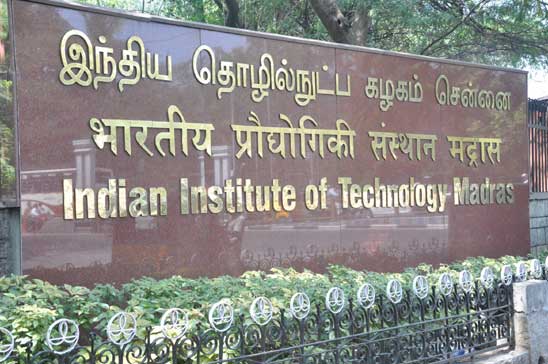IIT Madras Researchers use Brainwaves (EEG) to track Human Performance during Crises
Chennai: Researchers at Indian Institute of Technology Madras have shown that electroencephalogram (EEG) can be used to measure brainwaves in workers, to assess their mental sharpness, especially during times of crisis. EEG involves placing sensors on the scalp of the subject and measuring brain wave activity.
Such measurements will help in assessing the capability of the worker to respond to an emergency in real-time, which, in turn, could prevent accidents and mishaps on a factory floor.
The IIT Madras team has shown the potential of EEG, a technique that measures brain activity, to assess the cognitive workload of human operators in a chemical plant control room. The cognitive workload is the level of measurable mental effort that is expended by an individual to perform a task. High cognitive workload state of workers makes them prone to commit errors that can lead to accidents.
This research was undertaken by a team led by Prof. Rajagopalan Srinivasan, Department of Chemical Engineering, IIT Madras. The results of this research have been published recently in the reputed peer-reviewed Journal of Computers and Computer Engineering in a paper co-authored by Prof. Rajagopalan Srinivasan, Mr. Mohd Umair Iqbal and Prof. Babji Srinivasan.
Elaborating about the need for this Research, Prof. Rajagopalan Srinivasan, Department of Chemical Engineering, IIT Madras, said, “Human errors are the cause of nearly 70 per cent of industrial accidents, the world over. Human errors, whether at the planning or execution stage, depend not only on the skill of the worker but also on his/her mental state and sharpness at that time. Anybody’s performance will become error-prone if there is a mismatch between the demands of the task which the person is responsible and their ability at that moment to handle it. Such a mismatch leads to high cognitive workload in human operators, often a precursor to poor performance.”
Further, Prof. Rajagopalan Srinivasan explained, “All our thoughts and activities are driven by electrical signals between the cells in our brain called brain waves, which occur at different frequencies and are called alpha, beta, gamma, theta and delta. The relative magnitudes of these waves along with their variation are a signature of our thought process and current mental state.”
The research team affixed sensors to the heads of six participants and had them perform eight tasks each. The nature of the tasks was to monitor a typical industrial section for any disturbances which if not controlled, by the participant, in a given time frame can lead to accidents. Thus, the nature of the job required them to understand the plant (industrial section) behaviour and take appropriate decisions and actions if any disturbance occurred. The disturbance increased their cognitive workload, and only if the correct decision was made, did the cognitive workload reduce.
Their results showed that the amount of Theta Waves could identify any mismatch between the worker’s mental model of the process and the actual plant behaviour during abnormal situations. This makes sense because the ‘theta band’ of brainwaves has been thought to be responsible for the control process of working memory functions.
The determination of the varying cognitive workload, in turn, influences human performance, and indeed, the IIT Madras researchers found that the power spectral density in the theta band, correlated well with participants’ successes and failures during the task.
“We intend to study the potential of these EEG methods to improve human performance in various high-risk industries, thus opening a new paradigm to industrial safety and its relation to the real-time mental state of the worker,” said Prof. Rajagopalan Srinivasan.
The EEG based approach can provide information about the cognitive workload of operators during training, which in turn can be used to fine-tune the training process itself. It can also provide targeted cues during learning, to improve the overall effectiveness of training.

